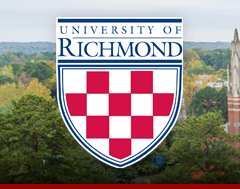Date of Award
3-1976
Document Type
Thesis
Degree Name
Master of Arts
Department
French
Abstract
Á la recherche du temps perdu, by Marcel Proust, is the story of a young, naive boy named Marcel who grew up to be a writer . In this paper, when the author of the novel is referred to, the name Proust will be employed, while the main character of the novel will be referred to as Marcel. For Marcel, the narrator of the work, the composition of a novel was his only hope for immortality and salvation from the passage of time, since time destroys. In his quest for immortality, it was his task to understand the ever-changing relation ships between him and the other characters with whom he came in contact. Proust realized that reality is only relative to a man's position within the framework of perpetually flowing time. As with time, all reality is transient and must be viewed from the vantage point of the present, through memory. For Proust, every individual undergoes a metamorphosis from past to present to future time. In every human being, how ever, there are three separate persons: the person he believes himself to be, the person as other people see him, and the person he really is. These three-sided relationships within a trilateral framework of past, present, and future time become quite complicated and intricate. The writing of the novel was Marcel's manner of observing and recording the flux of time and its effects on human relationships.
He had to gaze backward in time to understand his role within time and decided to recreate the world as he knew it within the universe of his novel. The novel was the only way in which he could lock perman ently, all those changing realities, thereby making them the one, universal reality within the confines of the covers. rt was a way in which to make all the modalities of time "the present." The novel becomes its own reality since it transcends the natural pas sage of time. Like a god, Proust created a world which for him was reality, a universe in which only he could change the chronological order of events. Even though time has destroyed all past relationships, the novel, as art, has preserved and glorified them.
In this respect, Proust has connected every major event in Marcel' s transition from young man to writer with a series of symbols, all of which are re lated either directly or indirectly with the symbol of the cross. The cross in Á la recherche du temps perdu is either a symbol of reality revealed, reality deceived or reality rediscovered. The allusions to the cross intensify the triunity of time and all relationships because of the three-sided construction of the cross. Proust has, however, severed the meaning of the symbol of the cross from its traditional religious context for his own literary purpose of demonstrating that there is salvation only in art and only for the creative artist.
This paper seeks to explore the image of the cross, as the symbol of salvation which marked Marcel's growth as writer, in quest of his own deliverance from time by the writing of the novel.
Recommended Citation
Freedman, Eugene, "A study of the symbol of the cross in Marcel Proust's A la recherche du temps perdu" (1976). Master's Theses. 396.
https://scholarship.richmond.edu/masters-theses/396
